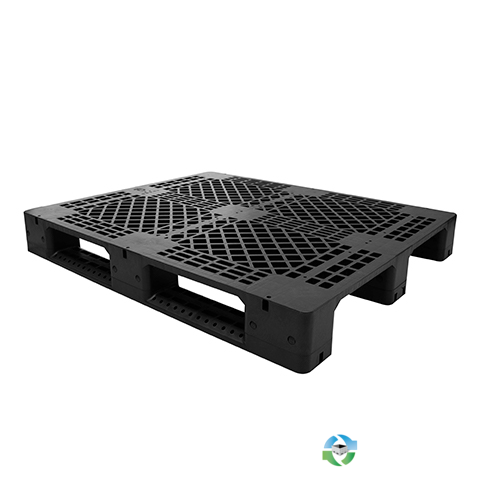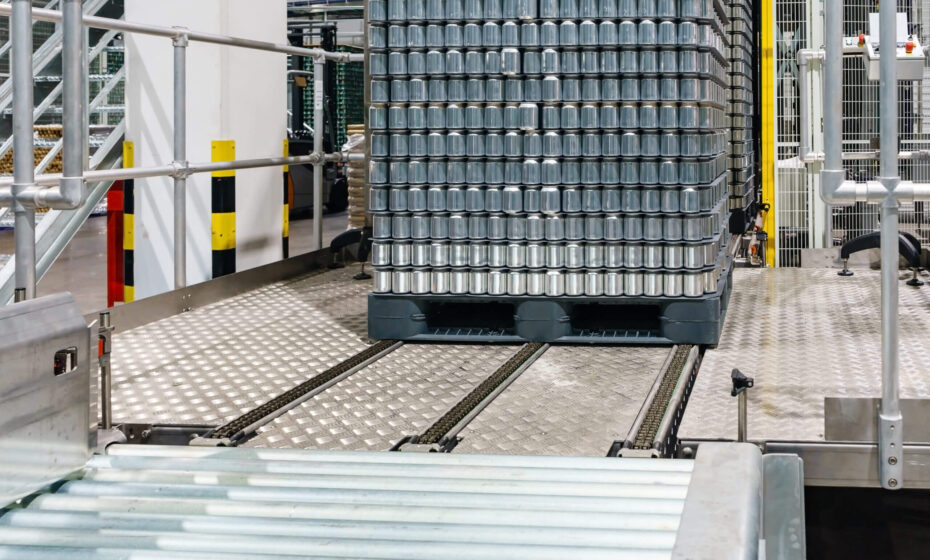While wooden pallets are more often used for shipping than plastic euro pallets, each material type has key benefits and drawbacks. Understanding when to use one over the other is important, and you’ll learn about that today.
Which Is Better: Wooden or Plastic Pallets?
While wooden pallets are typically more versatile and easier to use for most cargo types, top-deck plastic pallets are suitable for transporting items that require higher hygiene levels. Likewise, they’re primarily used by the pharmaceutical and food industries.
When determining which is better, consider how you’ll use the pallet after shipping. Plastic versions are better than wood if they’re being returned to you. However, the opposite is true if you’re not getting them back.
Ultimately, if you need something heavy-duty, plastic pallets are the most ideal, and they’re suitable for various industries. However, you’ll have to consider transport costs before deciding.
Cost of Wooden Pallets vs. Plastic Pallets
Shipping costs might be the biggest factor in deciding between wood and euro pallets.
Wood versions are cheaper to produce, though they’re usually a medium-duty option. The initial cost is lower than that for a plastic pallet, which is important to consider for small companies.
However, plastic pallets could cost less overall because they aren’t as likely to get damaged and have longer lifespans. Despite this, many companies are put off by the higher price compared to wooden ones.
Explore Our Selection of Euro Plastic Pallets
When to Use Traditional Wooden Pallets
Wooden pallets are the most popular option, and they account for about 90 to 95 percent of all pallets. Ultimately, they’re easier to source and cheaper than their plastic counterparts. Plus, they are medium-duty and can transport various cargo types, such as industrial machinery and furniture.
If you need a sturdy pallet, wood might be the best solution. Let’s look at the benefits and drawbacks of wood over euro pallets:
Benefits of Wood Pallets Over Euro Pallets
Here are the benefits of wooden pallets:
- Wood pallets cost roughly three times less than euro pallets.
- They can hold more weight than a plastic pallet (up to 3,000 kg).
- They’re easier to repair and biodegradable, unlike euro pallets.
- Their high friction levels allow wooden pallets to be more stable.
- They’re easy to replace, so they’re cost-effective for one-way shipping needs.
Disadvantages of Wood Pallets Compared to Plastic Pallets
The disadvantages of wooden pallets include:
- Compared to a plastic pallet, wood isn’t suitable for fragile items.
- Wood has a shorter lifespan and is prone to rot, fungal/bacterial infestation, and other damage.
- Wood is unsuitable and unhygienic when transporting pharmaceutical or food items.
- The wood might need to be chemically treated and requires documentation for export in some cases.
- Deforestation can occur if wood pallets are mass-produced.
When to Use Plastic Pallets

An open-deck plastic pallet is often used for various situations, such as transporting frozen and fresh food, pharmaceuticals, and other items that have temperature-controlled or strict hygienic conditions.
If you regularly ship things to the same client, you might want to invest in a heavy-duty plastic pallet. They can be returned after shipping and feature a longer lifespan. Likewise, they are reusable and lightweight, weighing roughly 70 percent less than a wooden pallet.
Benefits of Euro Pallets Over Wood Pallets
Here are the advantages of choosing a euro pallet:
- A top-deck euro pallet is more hygienic than wood and doesn’t have infestation issues.
- There is less risk of injury or damage because you won’t find splinters, nails, or sharp edges.
- Compared to wood, a euro pallet can withstand harsh weather conditions.
- Plastic isn’t porous, so it’s easier to clean than wood.
- The plastic is often made of recycled materials.
- There are various euro pallet sizes that are durable enough to handle the full supply chain.
- A plastic pallet is reusable and can be used for raw materials and finished goods.
Disadvantages of Plastic Pallets Compared to Wood Versions
Though the benefits are plentiful, there are some disadvantages of plastic pallets:
- A euro pallet costs about three times more than wood versions.
- They’re not ideal for transporting excessively heavy loads.
- They feature a sleek surface, so they’re slippery and might not be stable enough for stacking.
- They aren’t cost-effective for one-way shipments.
- Plastic is harder to repair.
Determining Which One to Use
When comparing wood and plastic pallets, it’s crucial to consider your specific needs, such as cargo, budget, and shipping frequency. Here are a few tips to ensure you make the right choice:
- Choose plastic euro pallets if you’re shipping things with high hygiene standards.
- Consider wood if you’re shipping heavy loads.
- Wood is cheaper than a plastic pallet.
- A plastic pallet is economical and heavy-duty.
Why Choose Container Exchanger
If you currently use wood and wish to upgrade to a euro pallet, you need a reliable source. Purchasing more pallets will help you ship things faster, and Container Exchanger is here to assist.
Please call (404) 551-5599 to get more information about our products. We have a durable plastic pallet that will meet all of your needs.
